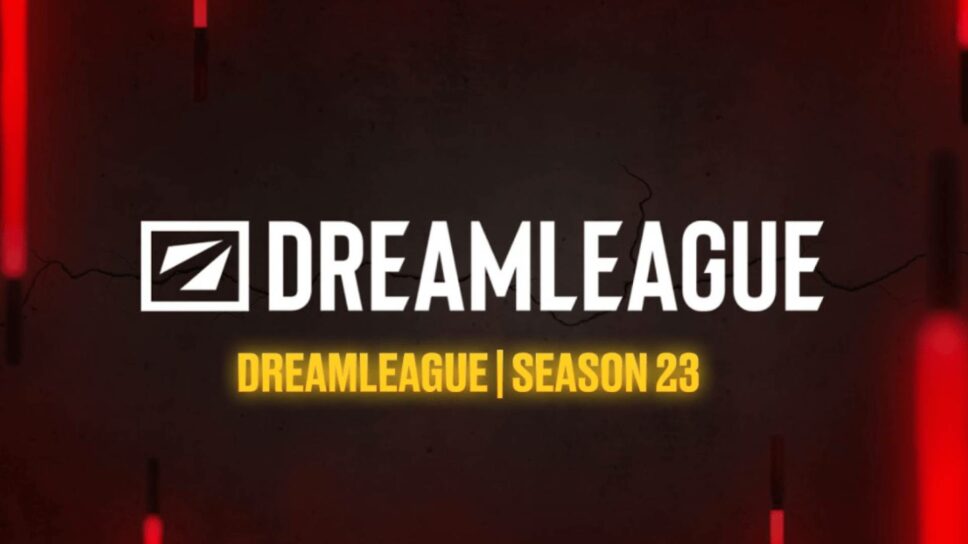If you’re a new or returning Dota 2 player, here’s all the updated information you need to know regarding the Dota 2 rank system.
How things work in Dota 2 might be simple or straightforward to long-time players; it is a decade-year-old video game after all. But it is constantly evolving, and new players are always coming in and trying out the popular MOBA. So one of the popular questions when venturing into Dota 2 is about its ranking system.
What is MMR? How to know my rank? How do I get on top of the ranks? All of your questions about the rank and matchmaking system will be answered here.
You can also find many other Dota 2 guides on our site including a hero tier list, heroes to play for beginners, guides for specific heroes, and more.
What is MMR in Dota 2?

Your rank or basically your skill level is determined through your MMR, or Matchmaking Rank number. Dota 2 has two types of MMR, one is for Ranked matches and another one is for Unranked Matches. But only the Ranked MMR is visible on your profile. There is also a hidden sub-MMR that indicates your skill level for different roles in the game (Carry, Mid, Support, etc). MMR starts at 1 and can go up infinitely.
How MMR calibration works in Dota 2
Before getting your official ranked MMR, new players first need to fill a couple of requirements.
- 100 Hours of Normal Match played (Turbo or Unranked Match)
- Link a phone number to your account
After fulfilling these requirements, new players are eligible to play 10 Calibration matches.
How to know when you've unlocked Calibration? When you open your Profile > Stats, you will see MMR TBD-- 10 Games Remaining.

A lot of players think only the 10 matches matter, but Dota 2 actually takes into account your entire match history those last 100 hours to determine your rank.
After 10 matches, you earn your MMR and you will be sorted to a medal that represents your rank.
What are the medals in Dota 2?
In Dota 2, there are medals that represent your rank and MMR. Your medal is visible to everyone, meanwhile, your MMR is only visible to you. There are 8 medals and each medal has 5 levels in the form of stars. For example; there is Herald 1, Herald 2, Herald 3, Herald 4, and Herald 5.
Herald (0 ~ 700)

Players in Herald are at the bottom of the ranks and obviously it is filled with beginners or people with lesser skills. There are also a lot of people with decent skills, but due to their bad gaming specs or internet, they’re always not playing properly, idling, or just constantly getting abandons.
Because of the lack of awareness of meta or itemization, the Herald bracket is wild and can be totally random at times.
Guardian (770~1,386)

The Guardian bracket is just a step over Herald. These two brackets have similar gameplay and can be clueless on a lot of Dota 2 basics.
Crusader (1,540 ~ 2,156)

Once you step into this bracket, you’ll notice that players have a little more knowledge about the game. They likely follow item guides more and have a better understanding of the game.
Archon (2,310 ~ 2,926)

If you land in Archon, welcome to the average club. In this bracket, you’ll likely find more teamwork and more strategized moves.
Legend (3,080 ~ 3,696)

The Legend bracket is above average. They’re a step above Archon and they generally do more things better such as last hitting, decision making, and more.
Ancient (3,850~4,466)

The Ancient bracket is where the players start truly understanding the game. They know more below the surface of Dota 2 such as the importance of map movement. Furthermore, they have better mechanical skills and are better at laning.
Divine (4,620~5,420)

Welcome to the top of the chain, Divine bracket players are really good at the game as they have mastered most Dota 2 mechanics and gameplay.
Immortal (Leaderboard)

Immortals are players on the leaderboard, representing world's best Dota 2 players. These players are in the pool of professional players across all tiers. They are the ones who usually define meta; their discoveries of the patch are followed down to the lowest bracket. You can also find their games in the Watch tab in the Dota 2 client itself.
Immortals have different medals according to their placement on the leaderboard. They're separated by top 1000, 100, 10, and 1.

How to rank up your MMR and medal in Dota 2
As it typically goes, winning a Ranked game means winning MMR and vice versa. The way Dota 2 calculates your MMR gain/loss is simple and straightforward.
Solo games: +30 MMR or -30 MMR
Party games: +20 MMR or -20 MMR
Typically, 1 MMR equals somewhere around 1% of your medal progress, so gaining 30 MMR would roughly be 30%. You can see your medal progress from the percentage on your profile.

How matchmaking works in Dota 2
The Dota 2 matchmaking system will try to pair up a fair matchup according to the average MMR. So in both teams, there can be different medals or an MMR gap but it ultimately equals to similar average.
What is the MMR gap limit when queueing party matches?
The maximum MMR gap to queue together in a party is 2,000 MMR. So it means if you're 1K MMR, you can't queue Ranked games with players above 3K MMR.
How Recalibration works in Dota 2
One year post-calibration, players have the option to recalibrate their MMR (Settings>Account). Why do they do so? Recalibration could be a way to reset your MMR if the player feels they belong in a different bracket.

Recalibration is like a gamble. For your normal ranked games, you'll earn +30 MMR for a solo win. But in Calibration games, you'll get the chance to boost your MMR and possibly gain +50 MMR per win. You might even get more depending on your performance. However, losing a game means losing just as much MMR. So yes, recalibration is risky but also rewarding.
For returning players that have not played their account for months or even years, their account will be placed into a special recalibration mode. Dota 2 will take into account the duration of their absence and determine what rank they are currently at.
MMR Trivia

The MMR system has gone through a reset a couple of times and there have been a number of notable records of the highest achieved MMR.
The first player to reach:
- 8K MMR is Aliwi "w33" Omar.
- 9K MMR is Amer "Miracle-" Al-Barkawi.
- 10K MMR is Abed "Abed" Azel L. Yusop.
- 11K MMR is Abed "Abed" Azel L. Yusop.
- 12K MMR is Nuengnara "23savage" Teeramahanon.
Stay tuned to Esports.gg for more Dota 2 guides.



